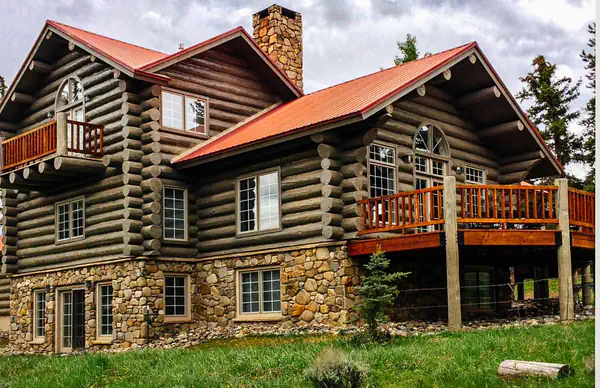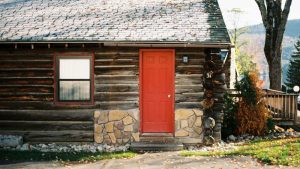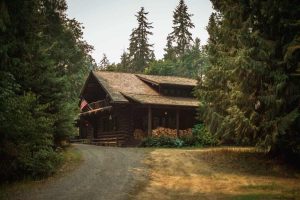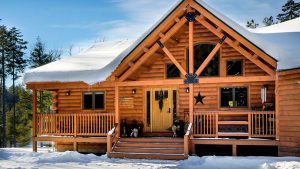Introduction
Log cabins evoke a sense of rustic charm and warmth, serving as an inviting retreat from the hustle and bustle of daily life. They stand out in any landscape with their unique structures made primarily of timber logs. But while you may be enchanted by their beauty, it’s essential to remember that these majestic homes require regular care, especially when it comes to the roof.
The roof is your cabin’s first line of defense against harsh weather elements—be it rain, snow, or intense heat. Neglecting this crucial part can lead to costly repairs down the road. In this guide, we’ll explore everything you need to know about maintaining your log cabin roof so that it remains functional and beautiful for years to come. Whether you’re a seasoned cabin owner or new to log living, understanding how to care for your rooftop is vital for preserving its integrity and longevity. Let’s dive into the essentials!
Common Issues with Log Cabin Roofs
Log cabin roofs face unique challenges due to their materials and design. One common issue is moisture retention, which can lead to mold growth and wood rot. These problems often arise from inadequate ventilation or damaged shingles.
Another frequent concern is ice dam formation in colder climates. When snow melts during the day but refreezes at night, it creates a barrier that prevents water runoff, causing leaks inside the cabin.
Pest infestations are also more likely with log cabins. Woodpeckers, termites, and other critters can damage your roof structure if not addressed promptly.
Wear and tear from weather conditions like heavy rain or high winds can cause shingles to loosen or break down over time. Regular inspections help catch these issues before they escalate into costly repairs.
Steps for Maintaining a Log Cabin Roof
Regular inspections are key to maintaining your log cabin roof. Start by checking for any visible damage, such as missing shingles or signs of wear. Look closely at the seams and edges where leaks often occur.
Cleaning is another essential step. Remove debris like leaves, twigs, and moss that can trap moisture against the wood. A gentle wash with a soft brush helps prevent mold growth.
Next, treat your roof with protective sealants or coatings specifically designed for log cabins. This will enhance durability and resist weather elements.
Don’t forget about overhanging trees; trim branches that could scratch or damage the roof during storms.
Keeping gutters clear ensures proper drainage and reduces water buildup on the roof surface. Regular maintenance keeps your log cabin looking great while protecting it from potential issues down the line.
Recommended Tools and Supplies
Maintaining a log cabin roof requires the right tools to ensure efficiency and safety. A sturdy ladder is essential for reaching those elevated areas without compromising stability.
Investing in high-quality roofing gloves will protect your hands while you work on repairs or inspections. They provide grip and cushion against rough surfaces.
A pressure washer can be invaluable for cleaning debris off your roof, but use it with caution to avoid damaging shingles or wood.
Additionally, having a durable tarp handy helps shield any exposed areas during unexpected rain while you make necessary repairs.
Don’t forget about basic supplies like nails, sealant, and roofing cement; they are vital for patching up small damages before they escalate into larger issues.
Consider acquiring a toolkit that includes screwdrivers, hammers, and wrenches—all of which will come in handy when tightening loose fittings or replacing damaged sections of your roof.
Seasonal Maintenance Tips
Seasonal maintenance is key to prolonging the life of your log cabin roof. Each season presents unique challenges and opportunities for upkeep.
In spring, inspect for winter damage. Clear away debris like branches or leaves that may have accumulated during the colder months. Look for any loose shingles or signs of water pooling.
Summer is an excellent time to check for pests. Critters can create nests in your roofing materials, leading to bigger issues down the road. Regularly examine seams and edges where insects might enter.
As fall approaches, it’s crucial to clean gutters thoroughly. This prevents clogging from falling leaves and ensures proper drainage as rain begins again.
Winter requires special attention; ensure snow doesn’t accumulate excessively on your roof’s surface. Heavy snow can lead to structural stress or even collapse if left unchecked during harsh weather conditions.
Signs that Your Log Cabin Roof Needs Repair or Replacement
- A watchful eye can save you from costly repairs. Look for curling or missing shingles; these indicate wear and tear.
- Dark spots or stains on the ceiling may suggest moisture issues. It’s a clear signal that water is seeping through your roof.
- Notice any sagging? This could mean structural damage, which needs immediate attention.
- Keep an eye out for granules in gutters—this shows shingles are breaking down. If they’re accumulating, it’s time to act.
- Also, check for mold growth in various corners of your cabin. Mold thrives in damp conditions, hinting at roof leaks.
- If you spot daylight peeking through gaps in the attic, your roof isn’t just tired—it might be failing. Address these signs promptly to protect your cherished log cabin home.
Hiring a Professional vs DIY Roof Maintenance
When it comes to roof maintenance, the choice between hiring a professional and tackling the task yourself can be daunting.
For those with experience, DIY projects can offer both satisfaction and cost savings. You gain hands-on knowledge about your cabin while ensuring that every corner meets your standards. However, this route often requires time, effort, and skill.
On the other hand, professionals bring expertise that is hard to match. They have specialized tools and techniques for identifying issues before they become major problems. Their experience might save you from costly mistakes down the road.
Consider safety too; working on roofs can present risks if you’re not trained or equipped properly. Weighing these factors will help you make an informed decision suited to your specific situation and comfort level with home maintenance tasks.
Conclusion and Final Thoughts
Maintaining a log cabin roof is more than just a seasonal chore; it’s an investment in the longevity of your home. A well-kept roof enhances your cabin’s charm and ensures protection against the elements.
Regular upkeep can prevent small issues from escalating into costly repairs. Keeping an eye on wear and tear not only saves you money but also gives peace of mind.
Embrace each season as an opportunity to inspect and maintain your roof. Remember, it’s all about being proactive rather than reactive when it comes to safeguarding your beloved retreat.
Whether you choose DIY methods or hire professionals, staying informed is crucial for every log cabin owner. With the right approach, you can enjoy many cozy years under a sturdy and beautiful roof that complements the rustic allure of your escape in nature’s embrace.
FAQS
What are the common materials used for log cabin roofs?
Log cabin roofs often employ materials like metal, shingles, or thatch. Metal is durable and can withstand harsh weather. Shingles provide a classic aesthetic but require more maintenance.
How often should I inspect my roof?
It’s wise to check your roof at least twice a year. Early detection of issues can save you from costly repairs later on.
Can moss on my roof be harmful?
Yes, moss traps moisture which may lead to rot. Regular cleaning helps prevent this buildup and prolongs your roof’s life.
What’s the average lifespan of a log cabin roof?
This varies based on material and maintenance, but most roofs last between 20 to 50 years with proper care.
Are there specific tools needed for inspections?
Basic tools include binoculars for visual checks and ladders for closer looks. A moisture meter can also be beneficial in assessing wood health.
Referenced
Log cabin roofs are not just a charming feature; they play a crucial role in the overall integrity of your home. Regular maintenance can help you avoid costly repairs down the line, ensuring that your log cabin remains a beautiful and safe space for years to come.
Staying proactive about common issues like leaks, moss growth, or damaged shingles will save you time and money. By following simple maintenance steps and utilizing recommended tools, you can keep your roof in top shape.
Seasonal check-ups allow you to address problems before they escalate. Be vigilant for signs that indicate repair or replacement needs. Knowing when to call in professionals versus handling tasks yourself is key.
The beauty of log cabins lies not only in their aesthetic appeal but also in their functionality. A well-maintained roof enhances this charm while providing safety from the elements.
Taking good care of your log cabin’s roof requires commitment but pays off significantly over time. Embrace regular inspections as part of owning such a unique property—your efforts will be rewarded with peace of mind and lasting beauty.




